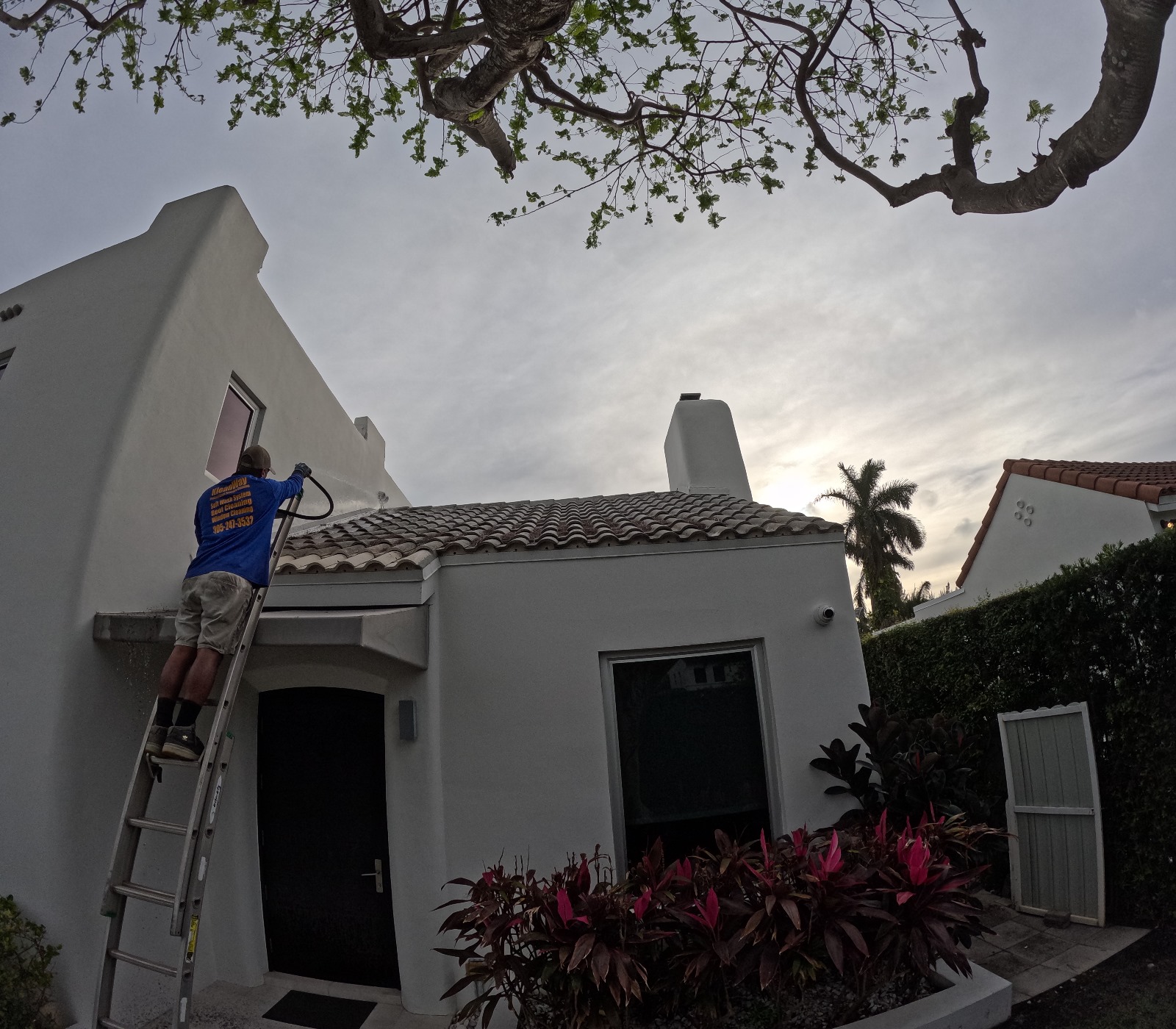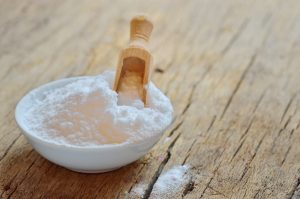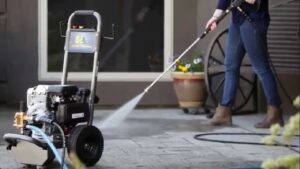Quick Summary (TL;DR)
Introduction:
In humid regions like South Florida, professional pressure and soft washing are essential for preserving property value, curb appeal, and safety. However, the success of every exterior cleaning project depends largely on how well homeowners prepare their space before professionals arrive.
Key preparation steps:
- Choose the right day: Schedule cleaning on a dry, mild day to avoid streaks or chemical dilution.
- Clear outdoor areas: Move furniture, potted plants, and vehicles away from walls and driveways.
- Seal and protect openings: Close windows, doors, and vents securely to prevent water intrusion.
- Inspect and repair surfaces: Fix cracks, loose siding, or damaged paint before cleaning begins.
- Cover electrical fixtures: Shield lights, outlets, and HVAC units to avoid short circuits.
- Coordinate with cleaners: Discuss fragile surfaces, eco-friendly preferences, and access points.
- Secure pets and family: Keep everyone indoors and away from the cleaning zone for safety.
- Final check: Confirm drains are clear and all protective covers are in place.
Why it matters:
Proper preparation prevents water damage, enhances cleaning effectiveness, protects landscaping, and ensures technicians can work efficiently. It also reduces costs by extending the lifespan of exterior materials like paint, concrete, and roofing.
Bottom line:
Good preparation leads to great results. A few careful steps can make a professional pressure wash more effective, safer, and longer-lasting. For South Florida homeowners, working with an experienced local provider like Kleanway Cleaning Service ensures every detail—from prep to finish—is handled with care and precision.
Introduction:
Cleaning the exterior of your home using pressure washing or soft washing is a powerful way to restore curb appeal, protect surfaces, and extend the life of your finishes. But a flawless result depends heavily on the prep work done before the cleaning begins. Below, you’ll find step-by-step guidance to get your home ready for professionals to work efficiently and safely.
1. Pick the Right Time and Conditions
- Weather matters: Aim for a dry, mild day. Rain or strong wind can interfere with cleaning solutions, dilute chemicals, or reintroduce dirt before it even dries.
- Avoid extreme heat: If surfaces are too hot (for example, midday sun on concrete or siding), cleaning agents may dry too fast, leaving streaks or residue.
- Watch the forecast: If rain or storms are predicted, reschedule. A dry window is essential for good adhesion and rinsing.
2. Clear and Secure the Surrounding Area
- Remove obstructions: Move patio furniture, potted plants, toys, grills, décor, and any loose items a safe distance away from walls, driveways, and roof areas.
- Protect landscaping: Cover shrubs, flower beds, delicate plants, and newly planted grass with tarps or plastic sheeting to guard them against overspray or chemical runoff.
- Relocate vehicles: Park cars, bikes, and other movable items offsite or at least far from areas being cleaned. Rinsing or spray can easily splash onto them.
3. Safeguard Windows, Doors, and Openings
- Close and seal: Ensure all windows, doors, garage doors, vents, and skylights are tightly closed. Gaps or damaged seals allow water to infiltrate inside.
- Cover vulnerable spots: Use plastic sheets or painter’s tape to protect window screens, frames, trim, and other delicate features. Loose screens may dislodge under pressure.
4. Inspect and Repair Exterior Surfaces
- Check for damage: Walk around your house and identify loose siding, cracked stucco, flaking paint, or missing shingles. These areas should be fixed or reinforced before washing.
- Caulk or patch: Small holes or cracks can worsen under pressure. Seal gaps in siding or trim to avoid water intrusion or splintering.
- Test paint adhesion: If paint is old, flaky, or chalky, pressure washing or even soft washing can lift it. Consider doing paint repair or stripping first.
5. Protect Electrical Fixtures and Utilities
- Cover outlets, lights, and panels: Use plastic covers or waterproof boxes for any exterior electrical features, light fixtures, meters, or junction boxes. Water entering these can cause damage or short circuits.
- Switch off circuits: If possible, temporarily deactivate power to exterior circuits during cleaning to reduce risk.
- Shield HVAC units and meters: These should be blocked or covered to avoid water spray entering sensitive parts.
6. Communicate and Plan with the Cleaning Team
- Mark special areas: Let the cleaning crew know about fragile surfaces such as decorative trim, masonry, or older siding that may require extra care.
- Specify cleaning agents: If you prefer eco-friendly or non-toxic cleaning solutions due to pets, landscaping, or local codes, inform the team ahead of time.
- Agree on access: Confirm where hoses, power sources, and equipment will go. Make sure pathways are clear for ladders or lifts.
- Time estimate: Understand how long cleaning may take, whether they’ll wash in sections, and when to expect rinsing.
7. Prepare Household, Family, and Pets
- Inform everyone inside: Let family members know the cleaning schedule so they can avoid opening doors or windows mid-cleaning.
- Secure pets: Keep pets indoors or confined in safe zones away from noise, moving equipment, or spray.
- Plan interior moves: Move any valuables or items near exterior walls away from windows in case of vibrations or splash.
8. Final Checks Before Arrival
- Do a walkaround: Perform a last-minute check to make sure all extraneous items are removed or covered and all windows and doors are secured.
- Water run: Run garden hoses through the perimeter so the cleaning crew can hook up water with no surprises.
- Ensure drain access: Make sure surface drains or gutters are not blocked so water and detergent runoff can exit safely.
Why All This Preparation Matters
- Efficiency: Prepped surfaces and cleared access allow cleaners to work faster and more thoroughly.
- Damage prevention: Properly sealed openings and repaired weak spots reduce the risk of water infiltration and structural damage.
- Better results: When a surface is well prepared, cleaning solutions adhere better and washing is more effective.
- Safety: Reducing tripping hazards, protecting electrical systems, and managing loose items ensures safer working conditions.
- Conservation: Covering plants and controlling runoff protects landscaping, groundwater, and nearby bodies of water from harmful chemicals.
Final Thoughts
By taking the time to prepare your home carefully for a professional cleaning, you set the stage for an outstanding result. Covering plants, securing windows, clearing debris, inspecting surfaces, and coordinating with your cleaning team ensures everything goes smoothly. The right prep work allows cleaners to deliver the best outcome without surprises or damage, leaving you with a cleaner, safer, longer-lasting exterior.
If you are planning to hire a trusted local provider, Kleanway Cleaning Service has extensive experience prepping South Florida homes for both pressure and soft washing. Their team can guide you through each step and ensure your property is handled with care and professionalism.





